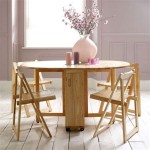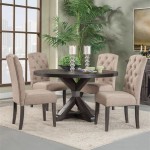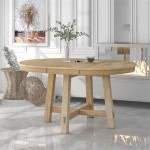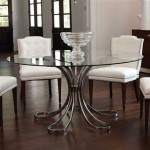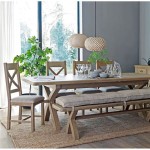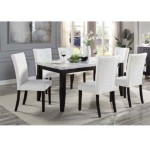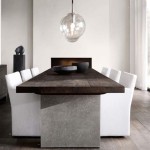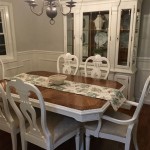Setting Up a Dining Table
A well-set dining table can transform an ordinary meal into a special occasion. Whether you're hosting a formal dinner party or enjoying a casual family meal, taking the time to set the table thoughtfully can elevate the dining experience. Setting a table involves arranging tableware, linens, and other decorative elements in a pleasing and functional manner. This article will explore the essentials of setting a dining table, providing a comprehensive guide to creating a beautiful and inviting setting for your guests.
Choosing the Right Tableware
The first step in setting a dining table is choosing the right tableware. This includes selecting plates, bowls, silverware, glasses, and serving dishes. The style and material of your tableware should complement the occasion and the overall aesthetic of your dining room. For formal occasions, consider using fine china, crystal glasses, and polished silverware. For casual gatherings, you might opt for more rustic or contemporary pieces.
When selecting plates, it's important to consider the size and shape of the plates. Dinner plates should be large enough to accommodate a main course, while salad plates are smaller and are used for serving salads or appetizers. Bowls can be used for soup, cereal, or desserts. Silverware should include a fork, knife, and spoon for each place setting. You may also need additional silverware pieces, such as a salad fork, a dessert spoon, or a butter knife, depending on the menu. Glasses should be chosen based on the beverages you plan to serve. Wine glasses, water glasses, and champagne flutes are common options.
Layering Linens and Placemats
Linens and placemats play a crucial role in creating a visually appealing and functional dining table setting. Linens include tablecloths, runners, and napkins, while placemats provide a protective layer for the table surface and enhance the overall aesthetics. The materials and colors of your linens and placemats should complement your chosen tableware and the theme of the dinner.
When using a tablecloth, ensure that it is large enough to hang evenly over the edges of the table. For a formal setting, a tablecloth with a crisp finish is preferred, while a more relaxed setting might call for a tablecloth with a textured or patterned design. Placemats can be made from various materials, including fabric, leather, wood, or bamboo. They can add a touch of color and pattern to your table setting, especially when using a plain tablecloth.
Arranging Place Settings
Place settings refer to the arrangement of individual tableware pieces for each guest. The standard place setting consists of the following items:
- Dinner Plate: The largest plate in the setting, placed in the center of the placemat or directly on the tablecloth.
- Salad Plate: Placed on top of the dinner plate or to the left of it, if a separate salad course is served.
- Fork: Placed to the left of the dinner plate, with the tines facing up. If there is a salad fork, it is placed to the left of the dinner fork.
- Knife: Placed to the right of the dinner plate, with the blade facing the plate.
- Spoon: Placed to the right of the knife, handle pointing to the right.
- Glasses: Placed to the right of the knife, typically a water glass in front and a wine glass to the right of it.
- Napkin: Placed to the left of the forks, folded in a decorative style, or placed on top of the dinner plate.
Adding Finishing Touches
Once the basic place setting is in place, you can add finishing touches to create a more personalized and inviting ambiance. These finishing touches can include:
- Centerpiece: A visually pleasing arrangement of flowers, candles, or other decorative objects placed in the center of the table to draw attention and create a focal point.
- Place Cards: Small cards with guests' names written on them, placed at each setting to help with seating arrangements and create a touch of formality.
- Favors or Gifts: Small tokens of appreciation or gifts for guests, placed at each setting or presented separately.
- Candles: Candles create a warm and romantic ambiance, especially for evening meals. Place them in decorative candle holders or use votive candles for a more subtle effect.
When setting your table, consider the occasion, the theme, and the overall aesthetic you want to create. Remember that a well-set table should be both functional and visually appealing. By following these guidelines and adding your own personal touches, you can create a dining experience that is both enjoyable and memorable for your guests.

How To Set The Table For Any Occasion Grain Frame

How To Set The Table For Any Occasion Grain Frame

How To Set A Table From Formal Casual Dining Architectural Digest

How To Set The Table For Any Occasion Grain Frame

Striking Dining Table Settings To Impress Guests Nz
:strip_icc()/Henderson_BFloral_0406copy-5d34fe79d5b945a5a0f08c987d1d1468.jpg?strip=all)
A Top Designer Shares 3 Quick Tricks For Setting Proper Dinner Table

27 Modern Dining Table Setting Ideas Room Centerpieces Decor

How To Set The Table For Any Occasion Grain Frame

How To Set A Beautiful Formal Table It S Easy Mantel And

Dinner Table Setting Tips For An Elevated Wine Dine Experience Building And Interiors

